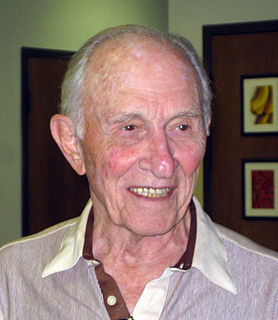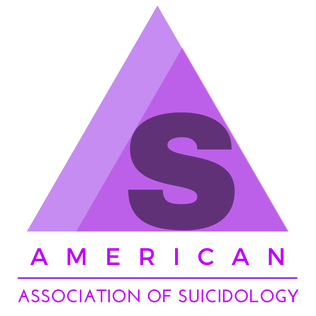
Grief is the response to loss, particularly to the loss of someone or some living thing that has died, to which a bond or affection was formed. Although conventionally focused on the emotional response to loss, grief also has physical, cognitive, behavioral, social, cultural, spiritual and philosophical dimensions. While the terms are often used interchangeably, bereavement refers to the state of loss, while grief is the reaction to that loss.

Suicide prevention is a collection of efforts to reduce the risk of suicide. These efforts may occur at the individual, relationship, community, and society level. Suicide is often preventable.
Death education is education about death that focuses on the human and emotional aspects of death. Though it may include teaching on the biological aspects of death, teaching about coping with grief is a primary focus. Death education is formally known as thanatology. Thanatology stems from the Greek word thanatos, meaning death, and ology meaning a science or organized body of knowledge. A specialist in this field is referred to as a thanatologist. Death education refers to the experiences and activities of death that one deals with. Death education also deals with being able to grasp the different processes of dying, talk about the main topics of attitudes and meanings toward death, and the after effects on how to learn to care for people who are affected by the death. The main focus in death education is teaching people how to cope with grief. Many people feel death education is taboo and instead of talking about death and grieving, they hide it away and never bring it up with others. With the right education about death, the less taboo it may become.
Suicide intervention is a direct effort to prevent a person or persons from attempting to take their own life or lives intentionally.
Suicidology is the scientific study of suicidal behaviour, the causes of suicidalness and suicide prevention. There are many different fields and disciplines involved with suicidology, the two primary ones being psychology and sociology. Every year, about one million people die by suicide, which is a mortality rate of sixteen per 100,000 or one death every forty seconds. Suicide is largely preventable with the right actions, knowledge about suicide, and a change in society's view of suicide to make it more acceptable to talk about suicide.
The American Foundation for Suicide Prevention (AFSP) is a voluntary health organization based in New York City, with a public policy office based in Washington, D.C., and local chapters in all 50 states in the United States. The organization's stated mission is to "save lives and bring hope to those affected by suicide."

Edwin S. Shneidman was an American clinical psychologist, suicidologist and thanatologist. Together with Norman Farberow and Robert Litman, in 1958, he founded the Los Angeles Suicide Prevention Center, where the men were instrumental in researching suicide and developing a crisis center and treatments to prevent deaths.
Youth suicide is when a young person, generally categorized as someone below the legal age of majority, deliberately ends their own life. Rates of attempted and completed youth suicide in Western societies and other countries are high. Youth suicide attempts are more common among girls, but adolescent males are the ones who usually carry out suicide. Suicide rates in youths have nearly tripled between the 1960s and 1980s. For example, in Australia suicide is second only to motor vehicle accidents as its leading cause of death for people aged 15–25, and according to the National Institute for Mental Health, suicide is the third leading cause of death among teens in the United States.

Norman Louis Farberow was an American psychologist, and one of the founding fathers of modern suicidology. He was among the three founders in 1958 of the Los Angeles Suicide Prevention Center, which became a base of research into the causes and prevention of suicide.

The American Association of Suicidology (AAS) is a 501(c)(3) nonprofit organization which advocates for suicide prevention. It was established in 1968 by Edwin S. Shneidman, who has been called "a pioneer in suicide prevention." Its official journal is Suicide and Life-Threatening Behavior, published six times a year by Wiley-Blackwell.

Michelle L. Rusk, born Michelle Linn, and formerly known as Michelle Linn-Gust, is an American author and speaker on coping with grief following suicide, especially that of siblings. She is a Past President of the American Association of Suicidology and she has written several books about the experiences of families following the suicide of a member, given workshops to the bereaved and the clinicians who work with them on dealing with their grief, and spoken widely on the topic. She also has offered workshops in the Southwest for the Navajo and Pueblo peoples of the reservations, who have suffered high rates of suicide among young people. From 2012 to 2015 she wrote the Good Causes column for the Naperville Sun newspaper and today is working to inspire hope and healing in people who have suffered loss, particularly divorced women.

Samaritans of Singapore (SOS) is a non denominational, non-profit suicide prevention centre. Since its establishment in 1969, SOS has developed into a professionally run and managed organisation. It adopts a holistic approach to suicide, focussing on suicide prevention, intervention and postvention.
In psychiatry, complicated grief disorder (CGD) is a proposed disorder for those who are significantly and functionally impaired by prolonged grief symptoms for at least twelve months after the bereavement. It is distinguished from non-impairing grief and other disorders. This disorder has been reviewed by the DSM-5 work groups, who have decided that it be called Persistent complex bereavement disorder and placed it in the chapter on Conditions for Further Study in the new DSM-5.
The National Action Alliance for Suicide Prevention is an American suicide prevention organization coordinating national efforts to advance the National Strategy for Suicide Prevention (NSSP). It is a public/private partnership that, according to them, "catalyzes planning, implementation, and accountability for updating and advancing the NSSP. The Action Alliance works on the 2001 National Strategy for Suicide Prevention and is an outgrowth of the Suicide Prevention Resource Center. The Action Alliance initially focused on three high-risk populations: LGBT youth, American Indians/Alaska Natives, and military/veterans. Part of the group's campaign will be to educate on the warning signs of suicide, promoting the National Suicide Prevention Lifeline, as well as community crisis clinics across the U.S.
Prolonged grief disorder (PGD) refers to a syndrome consisting of a distinct set of symptoms following the death of a loved one. PGD is experienced by about 10 percent of bereaved survivors, though rates vary depending on the circumstances. The affected person is incapacitated by grief, so focused on the loss that it is difficult to care about much else. He or she often ruminates about the death and longs for a reunion with the departed, while feeling unsure of his or her own identity and place in the world. The victim will develop a flat and dull outlook on life, feeling that the future holds no prospect of joy, satisfaction or pleasure. The bereaved person who suffers from PGD feels devalued and in constant turmoil, with an inability to adjust to life without the beloved.
Diego De Leo is an Italian professor, doctor and psychiatrist. Until August 2015, he was the director of the Australian Institute for Suicide Research and Prevention (AISRAP), World Health Organization Collaborating Centre on Research and Training in Suicide Prevention at Griffith University in Brisbane, Australia. He has been on the editorial board of Crisis: The Journal of Crisis Intervention and Suicide Prevention since 1990, was its Editor-in-Chief from 2008 to early 2018, and is now Editor emeritus of the journal. He is frequently quoted in Australian news reports as an expert on suicide prevention.

Suicide awareness is a proactive effort to raise awareness around suicidal behaviors. It is focused on reducing social stigmas and ambiguity, by bringing attention to suicide statistically and sociologically, and encouraging positive dialogue and engagement as a means to prevent suicide. Suicide awareness is linked to suicide prevention as both address suicide education and the dissemination of information to ultimately decrease the rate of suicide. Awareness is a first stage that can ease the need for prevention. Awareness signifies a fundamental consciousness of the threat, while prevention focuses on stopping the act. Suicide awareness is not a medical engagement, but a combination of medical, social, emotional and financial counseling. Suicide awareness in adolescents focuses on the age group between 10–24 years, beginning with the onset of puberty.
Suicide bereavement is the experience of those who are grieving the loss of someone to suicide. Over 800,000 individuals die by suicide every year. For every suicide, 6-10 people grieve their deaths.
Suicide and trauma is the increased risk of suicide that is promoted by psychological trauma.







